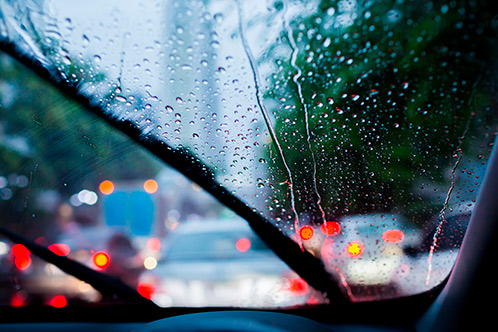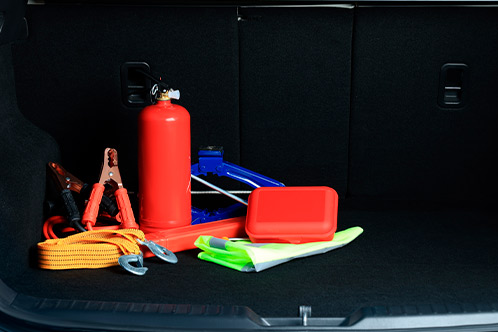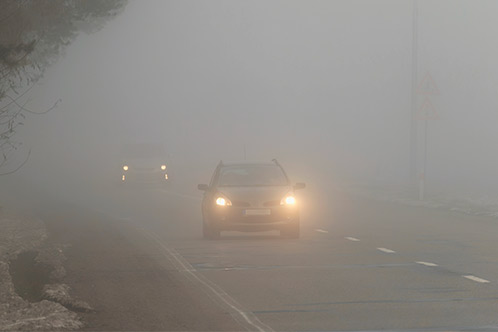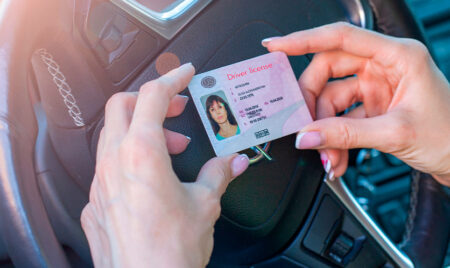How to Drive Safely in Texas Fall Weather
Autumn in Texas isn’t just pumpkin spice season. It’s a time when the air feels cooler, the sunsets glow golden-orange, and weekend road trips call your name. But beneath that beauty lies something more unpredictable — Texas weather itself.
Unlike the steady scorch of summer, fall in the Lone Star State is moody. One morning might greet you with fog so thick you can barely see the traffic lights. By noon, it’s sunny and warm. By evening? Sheets of rain pounding the windshield.
These sudden shifts make driving in Texas fall weather uniquely challenging and sometimes downright dangerous.
Wet leaves, slick roads, fog, reduced daylight, and the ever-present threat of hydroplaning all test your patience and reflexes. But with awareness, preparation, and a few mindful habits, you can make your autumn drives much safer. Here are Texas road driving tips you should know about.
Understanding Fall Weather in Texas: Why It’s So Unpredictable

Cool northern air clashes with warm Gulf moisture, creating sharp temperature drops, sudden storms, and dense fog pockets, often all within the same day.
Add to that early sunsets, wet leaves, and leftover summer oils on the road, and you’ve got a cocktail of hazards that can catch even seasoned drivers off guard.
Being mentally prepared for these shifts is the first step to staying safe.
Texas Road Driving Tips
1. Rain, Leaves & Oil: The Hidden Slippery Traps
Fall brings more than cozy road views. It also brings a perfect storm of slick surfaces.
When rain mixes with fallen leaves and leftover oil residue, Texas roads can become as slippery as ice. Many drivers underestimate this risk. Over 75% of weather-related accidents happen on wet pavement.
Here’s what you should remember:
| Hazard | What Happens | How to Stay Safe |
| Wet Leaves | Act like ice, especially during braking | Slow down before curves and avoid hard braking |
| Oil & Dirt | Mix with first rains to form a slick film | Drive slowly during first few hours of rain |
| Hydroplaning | Tires lose grip and “float” on water | Ease off accelerator, steer straight, avoid sudden braking |
It’s also worth noting that wet leaves can hide potholes and lane markings. So, stay alert, reduce your speed, and follow in the tire tracks of cars ahead as those tracks usually have less standing water.
2. Weather Whiplash: Handling Sudden Storms and Fog
In Texas, weather can be unpredictable. You might leave home under blue skies and meet a wall of fog or a thunderstorm just a few miles later.
Before you drive, always check the weather, not just for your city, but along your entire route. Fall thunderstorms and flash floods can pop up out of nowhere.
A few golden rules:
- Never drive through standing water. Even 6 inches can stall your car, and one foot can sweep it away. Turn around, don’t drown.
- Foggy roads? Go low-beam. High beams reflect off fog, making visibility worse.
- Disable cruise control when roads are wet. It can worsen hydroplaning.
- Find safe shelter during severe storms, not under an overpass. Overpasses can act like wind tunnels during high winds.
Having a weather app with radar helps, but so does old-fashioned preparation. Keep a flashlight, first-aid kit, blanket, snacks, and a half-full gas tank because you never know when you’ll need them.
3. Sun Glare and Shorter Days

During your morning and evening commute, the sun often sits perfectly at eye level, right in your line of sight. It’s blinding. And it happens exactly when traffic is heaviest.
Here’s how to fight back:
- Use polarized sunglasses. They cut horizontal glare bouncing off cars and roads.
- Keep your windshield spotless inside and out. Dust amplifies glare.
- Use your sun visors smartly. Adjust them before you hit the blinding stretch.
- Slow down and give space. If glare makes it hard to see brake lights ahead, increase your following distance.
And as daylight fades earlier, remember: half of all traffic deaths occur at night, even though only a quarter of driving happens then. Keep your headlights clean, aimed, and bright.
4. Night Driving: Fatigue, Glare & Hidden Hazards
By November, most Texans are driving home in darkness. And night driving, especially on wet or foggy roads, can be a recipe for trouble.
If you’re over 50, you may need twice as much light to see as clearly as a 30-year-old.
To drive more safely at night:
- Check all exterior lights. Headlights, taillights, turn signals, every bulb matters.
- Clean or replace foggy lenses. Cloudy headlights can cut light output by up to 80%.
- Dim dashboard lights to reduce windshield reflection.
- Look slightly to the right of the oncoming headlights to avoid being blinded.
- Take breaks on long drives. Fatigue sneaks up faster in the dark.
5. Vehicle Check-Up: Your Fall Safety Routine

- Tires: Pressure drops 1–2 PSI for every 10°F drop in temperature. Low pressure = less grip.
- Brakes: Make sure they respond smoothly; slick roads amplify braking distance.
- Windshield wipers: Replace them if they streak or skip.
- Battery: Texas heat wears it down; cooler temps expose the weakness.
- Fluids: Check coolant, brake fluid, and washer fluid with rain repellent.
Here’s a quick maintenance table:
| Component | Why It Matters | Fall Check Tip |
| Tires | Traction & stability | Maintain correct PSI and tread depth |
| Wipers | Visibility in storms | Replace every 6–12 months |
| Lights | Visibility for all | Clean lenses & check alignment |
| Battery | Reliable starts | Test if 3+ years old |
| Coolant | Prevent overheating/freezing | Ensure 50/50 mix |
If in doubt, schedule a seasonal inspection before fall rains set in.
6. Watch for Wildlife and Kids
Fall doesn’t just bring cooler air, it also brings movement.
Deer are more active during mating season, especially around dawn and dusk. And as temperatures cool, kids and pets spend more time outdoors again.
Here’s what to keep in mind:
- Scan the road edges. Deer rarely travel alone.
- Brake, don’t swerve. Swerving can cause a worse accident.
- Slow down near parks, schools, and neighborhoods. Children can dart into the road unexpectedly.
- Stay extra cautious around Halloween. Excited trick-or-treaters often wear dark costumes.
Your headlights, tires, and brakes, the very things you maintain, will determine how safely you can react when something unpredictable crosses your path.
7. Defensive Driving: The Art of Anticipation
When fall weather turns unpredictable, defensive driving is your best skill set.
Think of it as mindfulness on the road. Staying aware, anticipating others’ mistakes, and keeping enough space to act safely.
- Increase following distance to 5–6 seconds in rain or fog.
- Avoid sudden moves. Gentle acceleration and braking prevent skidding.
- Drive for conditions, not speed limits. Slow down during rain or fog.
- Stay off cruise control on wet roads.
- Eliminate distractions. You can’t control the weather, but you can control your focus.
Every second of awareness counts, especially when the weather decides to play tricks.
Emotional Resilience Behind the Wheel: Staying Calm When Things Go Wrong

Most accidents during bad weather occur not just because of road conditions, but because drivers panic. Panic makes you overcorrect, slam the brakes too hard, or freeze altogether. Emotional resilience is about recognizing that moment of chaos and responding with calm clarity instead of fear.
If your car begins to hydroplane, for example, your instinct might be to brake, but the safer move is to ease off the accelerator and steer gently in the direction you want to go. That kind of decision comes from presence, not panic.
Here are a few simple ways to build that calm behind the wheel:
- Breathe intentionally. Deep, slow breaths lower your heart rate and clear your thinking, even while driving.
- Keep your grip gentle, not rigid. A death grip on the wheel actually makes you less responsive. Relaxed hands move more fluidly when adjusting to slippery conditions.
- Focus on one step at a time. Don’t think about the “what ifs.” Just focus on regaining traction, maintaining distance, or finding a safe place to stop.
- Practice mental rehearsals. Picture yourself handling a skid, fog, or sudden storm calmly. Mental practice prepares your body for real-life calm reactions.
- Remember, confidence on the road doesn’t mean fearlessness; it means composure. You can’t control the weather, but you can control your response to it. And often, that’s what keeps you safe until the storm passes.
Emergency Readiness: What Every Texan Driver Should Carry
Texas highways stretch for miles through open plains, deserts, and backroads where cell service can vanish. If your car breaks down during a storm, nightfall, or flash flood, a well-stocked emergency kit can turn a crisis into a manageable wait.
| Essentials | Why You Need It |
| Flashlight + extra batteries | For night breakdowns or power outages |
| Jumper cables or a portable jump starter | Cold, wet weather drains car batteries faster |
| Blanket, gloves, and a rain poncho | For warmth and protection in sudden cold snaps or storms |
| Bottled water and non-perishable snacks | Hydration and energy if stranded for hours |
| First-aid kit | To treat minor injuries or cuts from roadside repairs |
| Reflective triangles or flares | To stay visible to other drivers in low visibility |
| Multi-tool or small wrench set | For small fixes or battery tightening |
| Portable phone charger or power bank | Stay connected when the car power fails |
| Emergency contact list on paper | Just in case your phone dies or signal drops |
A few bonus items Texans should consider: a tire pressure gauge, a compact air compressor, and a map of your region, yes, the paper kind. Floods and downed towers can knock out GPS, and knowing alternate routes could save hours.
Keeping these items in a waterproof container in your trunk or under the seat ensures you’re always ready.
And when that unexpected storm or engine trouble hits, you’ll thank yourself for thinking ahead.
Drive Confidently This Fall With Driving Quest
At Driving Quest, we believe confidence on the road comes from knowledge, calm, and the right training. If you want to hit the road feeling prepared for anything, from Texas storms to slick fall roads, enroll in Driving Quest’s Texas Adult Drivers Ed course today.
This state-approved, online course for adults 18 and older offers a comprehensive 6-hour program that includes the official DPS written exam, helping you take the fast track to earning your driver’s license. Learn at your own pace, master essential safety skills, and drive with confidence, no matter what the Texas weather brings. Contact us today to learn more.




